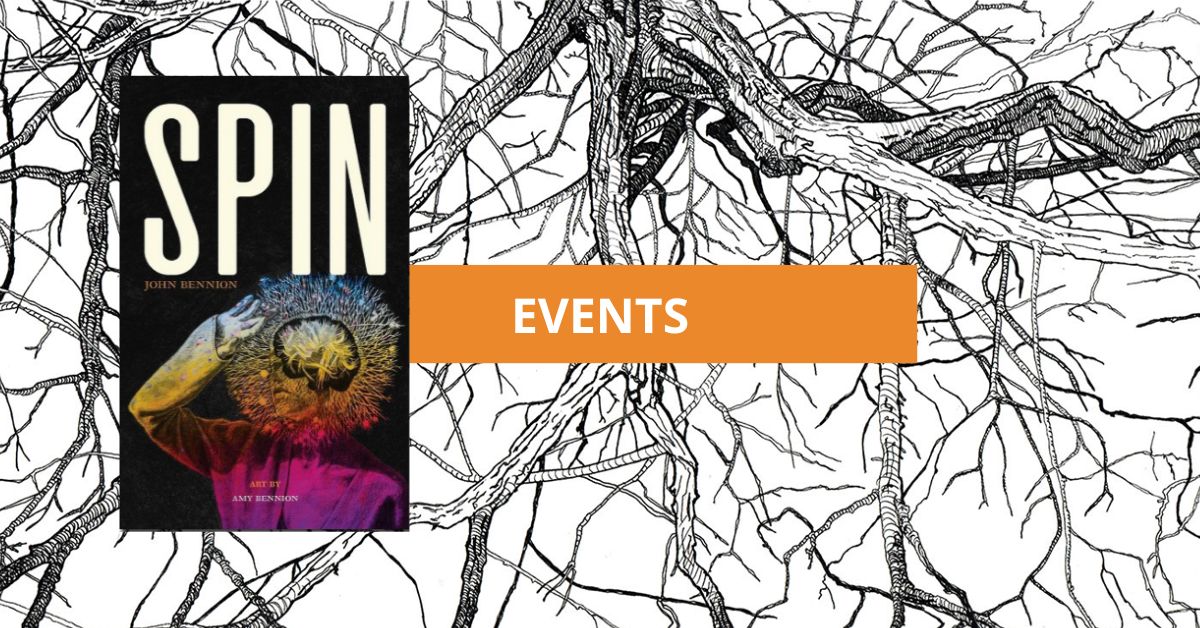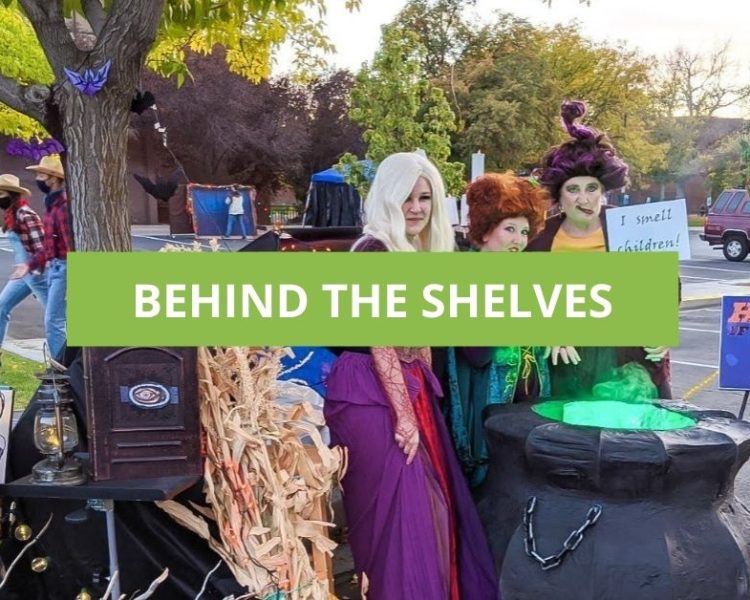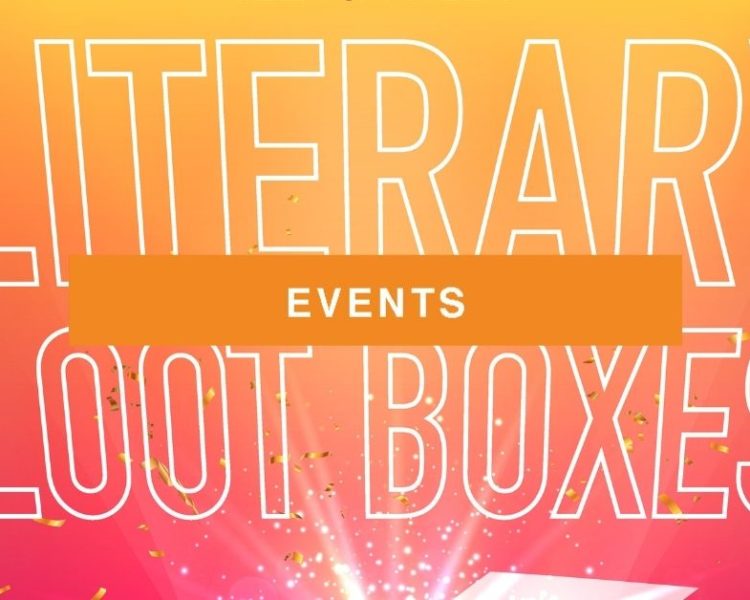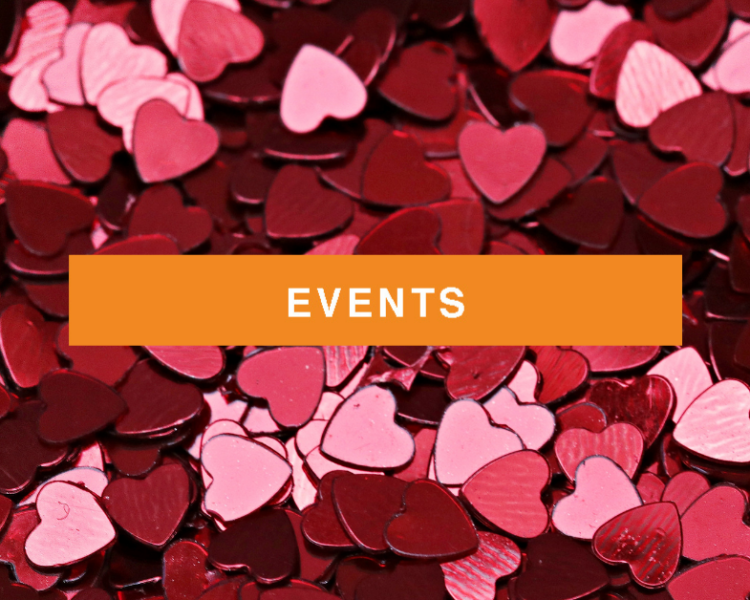Need an idea for date night? Come to Library Hall to see our newest art exhibit, “The Art of Spin” by visual artist Amy Bennion. Spin is an experimental novel by writer John Bennion with illustrations by his daughter Amy. Check out this interview with John and Amy and go see the show!
Orem Library Interview with John Bennion and Amy Bennion
Tell us about Spin. What is is about? Did the writing or the images come first?
John: Spin is the story of Lily Harker. After a divorce in which her former husband takes everything from her, she kidnaps her own child because she believes the justice system has failed her. As I started the novel, I had three women in my head: my sister, a former student, and one of Brigham Young’s daughters. All of these women had difficult first marriages and tangled divorces. I imagined the drama of a woman who was outmaneuvered by her husband and who ended up on the street, penniless and childless. One of the principles of fiction is to put someone in a difficult situation and watch how they get out of it. I couldn’t imagine a realistic or rational way for Lily to succeed against her husband, so the novel embraced a non-rational means of her getting her daughter away from him.
Amy: One reason I loved working with John on this project is that it was a two-way collaboration. Sometimes he would give me instruction on an image he imagined, and sometimes I would create pieces influenced by, but not held didactically to the text. And then, in turn, my drawings would sometimes shift the way he revised the text. We both agree the images that work the best in the novel are those that aren’t direct illustrations of the text, but those that were inspired by, but not held to the text. When we do our next book, we’ll pay closer attention to letting the collaboration be completely two-way, and inspire each other rather than letting any images be subordinate to the text.
Along with drawings and visual art, Spin contains essays on a broad range of topics woven into the narrative. What made you decide on this structure for your novel?
John: I write both fiction and essays, and I was entranced by the idea of blending the two and creating a genre-bending work. Also, I love the Victorian novelist George Eliot; she includes passages in her novel where she explores the cultural implications of her story.
What was it like collaborating as a father/daughter and writer/artist team?
Amy: I love to collaborate with John. It seems like we speak the same language in different art forms. We both have a drive to draw on our observations of people we know intimately, to discuss psychology using a kind of magical realism. We can’t help but put our own psychology into our work as well, our own experiences with mental illness and trauma. In this collaboration it was clear from the beginning that we wanted to use people we both knew well for our models, both in the drawing and in the text. This intimate knowledge of our characters allowed me to delve deeper into the development of the pieces. So the drawings went behind illustrations subordinate to the text, but they held layers of meaning beyond the text’s characters.
John: In addition, my grandmother was an artist. I’ve loved my conversations with Amy over her art, including the art in this book. We discovered that sometimes when I specified too particularly the drawing I envisioned, the drawing became more an illustration than a visual evocation of the issues in the novel. When Amy took over the issues and engaged with them, the drawing became a true collaborative work.
Utah has a rich tradition of both visual and literary arts. Who are some writers and artists you suggest for people interested in exploring the art and writing of this region?
John: I’ve always loved the art of Georgia O’Keeffe and Trevor Southy. The publisher of my novel Falling Toward Heaven obtained permission to use one of Southy’s works in the cover design. Of course, I love the writing of the pioneering writers Virginia Sorensen and Maurine Whipple. I also read the place-based fiction of Phyllis Barber, Dean Hughes, Todd Robert Peterson, Carol Lynch Williams, Ann Dee Ellis, Kristen Chandler, Brian Evenson, Steven L. Peck, Douglas Thayer, Edward Abbey, Katharine Coles, Marilyn Brown, Mette Ivie Harrison, Paul Bailey, Rosalyn Eaves, and many others.
Amy: My favorite art by artists working in Utah right now are the performative pieces of Beth Krensky exploring self and place, the wearable landscapes of Virginia Catherall, and the obsessive mark-making pieces of Al Denyer, mapping fractals and textures of our environment. A few other Utah artists that I love are Maureen O’Hara Ure, Jacqui Larsen, Edward Bateman, Peter Everett, and Lee Udall Bennion.
What are you currently working on? Any upcoming writing or creative projects? More collaborative projects?
John: Nothing yet. But just thinking about these questions has made my mental wheels start turning.
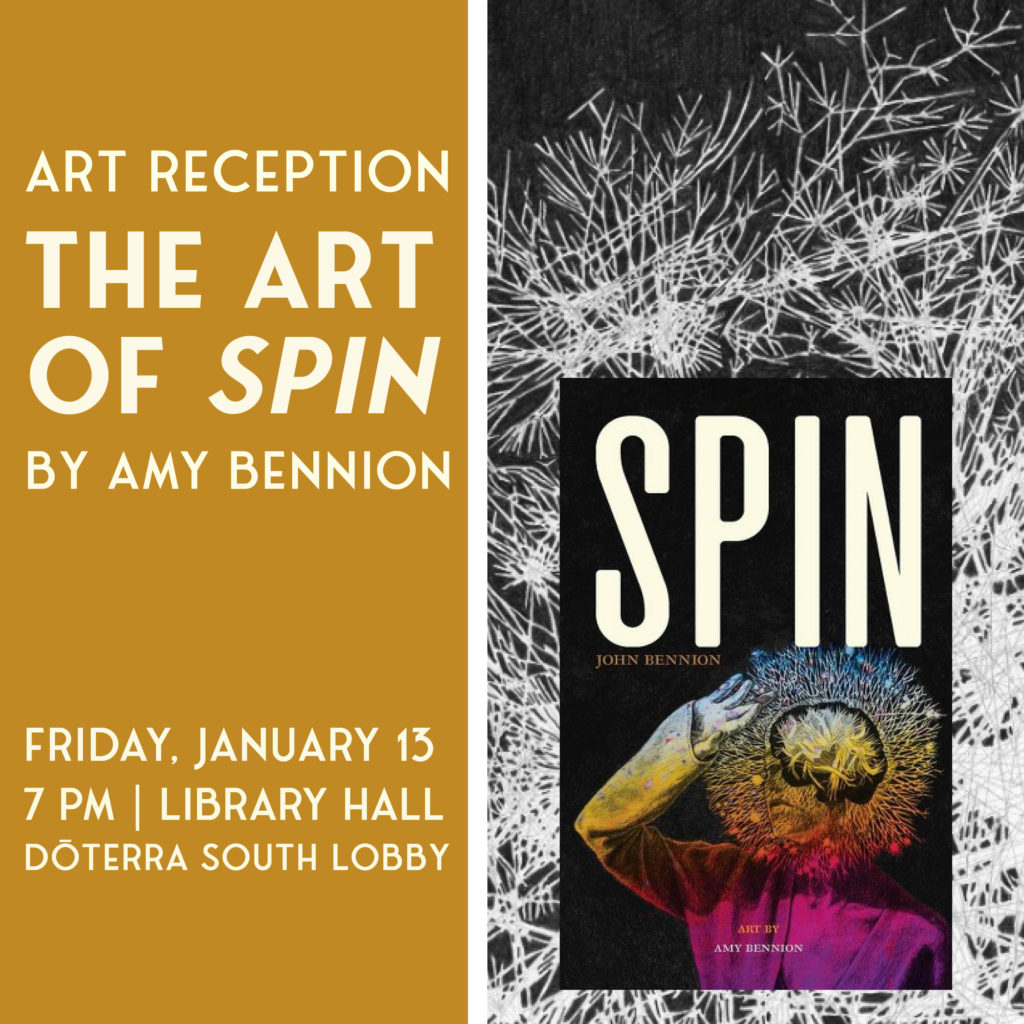
The Library Hall Gallery will display “The Art of Spin” from January 13 to February 28. The gallery is open for viewing during Library Hall programs. Join us for an art reception featuring a reading from the book by John Bennion, a Zoom conversation with Amy Bennion, and light refreshments on Friday, January 13, at 7 PM in the Library Hall’s dōTERRA South Lobby.

